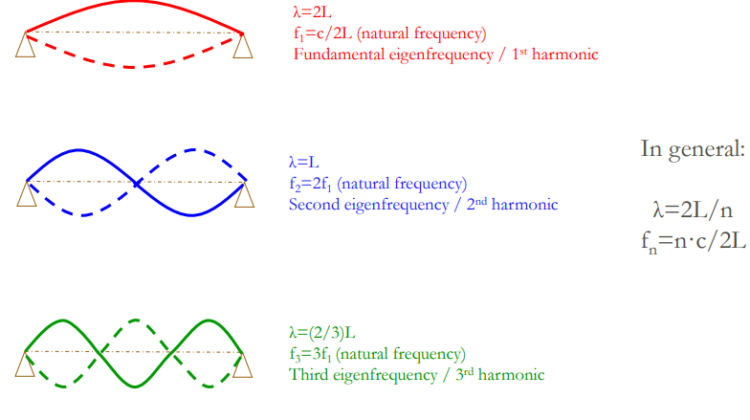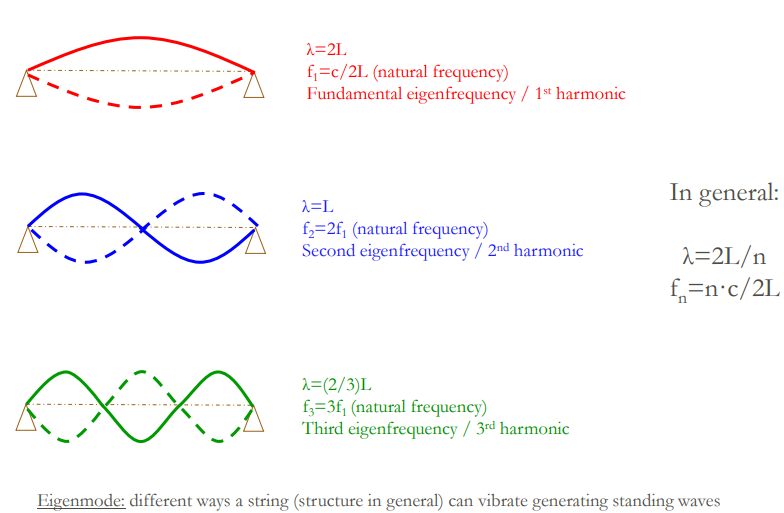
Juan Negreira, our Concept Developer at S-G Ecophon Spain, explains in this video what the phenomena of resonance and eigenmodes of a room are. Likewise, he exemplifies the concepts by means of a simple experiment carried out inside the reverberant chamber of Lund University (Sweden).
A structure (either solid of fluid), due to the fact of owing mass, damping, stiffness, and also due to their distribution and dimensions, possesses certain frequencies at which is more “vulnerable” than others. If the aforementioned structure is subjected to a dynamic excitation having a frequency close to one of its so-called natural frequencies, the response can be strongly enhanced, increasing its amplitude (displacement, velocity or acceleration amplitude in case of a solid structure, or sound pressure levels in case of the air contained inside a room). The latter phenomenon is that of resonance, and occurs due to the presence of a constructive interference between incident and reflected waves, which create in turn standing waves; i.e. waves bouncing between the structure or room boundaries and whose wavelength –or a multiple- is coincident with the dimensions between the structures limits (see Figure 1).
Examples of resonances are for example, when a wineglass breaks when excited with a loud-and-long enough tone (i.e. one single frequency) coincident with one of its resonance frequencies, or the well-known Tacoma bridge, amid others.

Associated to each resonance frequency, there is a pattern of vibration. The different ways a structure (air or solid material) can vibrate generating standing waves and thus a particular pattern is called eigenmode. It is very important, when designing for good room acoustics, to have knowledge about the sound sources, the room as well as the activity to be performed inside the space. In so doing, one can avoid having problems of concentration of sound levels (especially in the low frequency range) which can cause acoustic discomfort for the end users. Along those lines, use of absorbent materials is of paramount importance.
This phenomena of resonance and eigenmodes is explained in this short film below which includes an experiment inside the reverberant chamber.
For more information about this please contact Juan Negreira, Concept Developer in Spain.

